Filter by
You must be a CTBUH Member to view this resource.
Willis Tower
Sears Tower
Building
Completed, 1974
60606
office
steel
LEED Recertification Platinum (2019), LEED Gold O+M: Existing Buildings (2016)
442.1 m / 1,451 ft
108
3
104
8.1 m/s
423,638 m² / 4,560,001 ft²
You must be a CTBUH Member to view this resource.
You must be a CTBUH Member to view this resource.
Construction Start
Completed
Retrofit Start
Retrofit End
Usually involved in the front end design, with a "typical" condition being that of a leadership role through either Schematic Design or Design Development, and then a monitoring role through the CD and CA phases.
The Design Engineer is usually involved in the front end design, typically taking the leadership role in the Schematic Design and Design Development, and then a monitoring role through the CD and CA phases.
The Design Engineer is usually involved in the front end design, typically taking the leadership role in the Schematic Design and Design Development, and then a monitoring role through the CD and CA phases.
Other Consultant refers to other organizations which provided significant consultation services for a building project (e.g. wind consultants, environmental consultants, fire and life safety consultants, etc).
These are firms that consult on the design of a building's façade. May often be referred to as "Cladding," "Envelope," "Exterior Wall," or "Curtain Wall" Consultant, however, for consistency CTBUH uses the term "Façade Consultant" exclusively.
Material Supplier refers to organizations which supplied significant systems/materials for a building project (e.g. elevator suppliers, facade suppliers, etc).
Usually involved in the front end design, with a "typical" condition being that of a leadership role through either Schematic Design or Design Development, and then a monitoring role through the CD and CA phases.
The Design Engineer is usually involved in the front end design, typically taking the leadership role in the Schematic Design and Design Development, and then a monitoring role through the CD and CA phases.
The Engineer of Record takes the balance of the engineering effort not executed by the “Design Engineer,” typically responsible for construction documents, conforming to local codes, etc.
The main contractor is the supervisory contractor of all construction work on a project, management of sub-contractors and vendors, etc. May be referred to as "Construction Manager," however, for consistency CTBUH uses the term "Main Contractor" exclusively.
Material Supplier refers to organizations which supplied significant systems/materials for a building project (e.g. elevator suppliers, facade suppliers, etc).
You must be a CTBUH Member to view this resource.
Usually involved in the front end design, with a "typical" condition being that of a leadership role through either Schematic Design or Design Development, and then a monitoring role through the CD and CA phases.
The Design Engineer is usually involved in the front end design, typically taking the leadership role in the Schematic Design and Design Development, and then a monitoring role through the CD and CA phases.
The Design Engineer is usually involved in the front end design, typically taking the leadership role in the Schematic Design and Design Development, and then a monitoring role through the CD and CA phases.
The main contractor is the supervisory contractor of all construction work on a project, management of sub-contractors and vendors, etc. May be referred to as "Construction Manager," however, for consistency CTBUH uses the term "Main Contractor" exclusively.
Other Consultant refers to other organizations which provided significant consultation services for a building project (e.g. wind consultants, environmental consultants, fire and life safety consultants, etc).
These are firms that consult on the design of a building's façade. May often be referred to as "Cladding," "Envelope," "Exterior Wall," or "Curtain Wall" Consultant, however, for consistency CTBUH uses the term "Façade Consultant" exclusively.
Material Supplier refers to organizations which supplied significant systems/materials for a building project (e.g. elevator suppliers, facade suppliers, etc).
Usually involved in the front end design, with a "typical" condition being that of a leadership role through either Schematic Design or Design Development, and then a monitoring role through the CD and CA phases.
The Design Engineer is usually involved in the front end design, typically taking the leadership role in the Schematic Design and Design Development, and then a monitoring role through the CD and CA phases.
The Engineer of Record takes the balance of the engineering effort not executed by the “Design Engineer,” typically responsible for construction documents, conforming to local codes, etc.
The CTBUH lists a project manager when a specific firm has been commissioned to oversee this aspect of a tall building’s design/construction. When the project management efforts are handled by the developer, main contract, or architect, this field will be omitted.
The main contractor is the supervisory contractor of all construction work on a project, management of sub-contractors and vendors, etc. May be referred to as "Construction Manager," however, for consistency CTBUH uses the term "Main Contractor" exclusively.
Other Consultant refers to other organizations which provided significant consultation services for a building project (e.g. wind consultants, environmental consultants, fire and life safety consultants, etc).
Material Supplier refers to organizations which supplied significant systems/materials for a building project (e.g. elevator suppliers, facade suppliers, etc).
CTBUH Chicago FLC Office Tour Series: Gensler
23 January 2020 - Event
CTBUH Chicago Tours Willis Tower Renovations
28 August 2019 - Building Tour
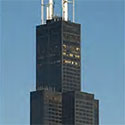
30 October 2017 | Chicago
Rethinking CTBUH's Height Criteria in the Context of Tall Timber
Recent developments in the design and construction of progressively taller buildings using engineered timber as a structural material raise important questions about the language that...
28 October 2019
Bringing an Icon into the Future: Willis Tower
Stephen Katz, Gensler
Few buildings are as iconic as Willis Tower. Generations of Chicagoans have a collective memory of this building playing a role in their entire lives....
The Willis Tower (formerly Sears Tower) in Chicago, with its signature black aluminum and bronze-tinted glare-reducing glass, was the tallest building in the world for nearly 25 years. Completed in 1974, Willis Tower set the standard for supertall skyscrapers around the globe, both in its innovative design and graceful styling. With approximately 424,000 square meters of gross floor area, the building is comparatively large for its height, with its foundation and the first 50 floors taking up an entire city block before the building begins to narrow.
The step-back design of the structure was designed by the architects as a direct result of Sears’ space requirements. The designers were required to develop a building that incorporated not only very large office floors, which were necessary to Sears’ operation, but also a variety of smaller floors which would be more suitable for tenants requiring less floor area. These requirements resulted in a bundled tube structure, the first of its kind. This innovative design was not only structurally efficient, but it also managed to be economical as well. It has proven to be a remarkably influential design typology, and has been used in most supertall buildings built since the Willis Tower, including the Burj Khalifa.
An assortment of features has kept the tower active, inviting, and efficient over its operational life. An undulating Alexander Calder sculpture greets office workers in the west lobby. Meanwhile, a 2009 addition to the observation deck affords visitors with vertigo-inducing views of Chicago via “The Ledge,” a series of boxes with transparent floors that extrude from the top of the building. Although the Willis Tower was built in an age before sustainable design matured, the building’s owners have recently implemented several sustainable elements, including low-flow fixtures that conserve more than 38 million liters of water annually, and high-efficiency lighting systems that help curb electrical loads.
Tallest building in the world 1974 - 1998. Preceded by One World Trade Center and surpassed by the Petronas Tower 1

30 October 2017 | Chicago
Rethinking CTBUH's Height Criteria in the Context of Tall Timber
Recent developments in the design and construction of progressively taller buildings using engineered timber as a structural material raise important questions about the language that...

16 March 2017 | Chicago
Building Tall Skyscraper Lecture Series: How High Can We Go?
Thursday, March 16, 2017. Chicago, United States of America. Hosted in collaboration with the Chicago Architecture Foundation, the first lecture of the series Building Tall...

26 October 2015 | Chicago
Developing Tall in the New York Context
Gary Barnett, Extell Development Corporation; Ric Clark, Brookfield Properties; Joseph Moinian, Moinian Group; and Larry Silverstein, Silverstein Properties, discuss development in New York City and...

11 June 2013 | Chicago
From London to Chicago: The Willis Group and Tall Buildings
From the 1970’s seminal Willis Faber Dumas Ipswich building, through 51 Lime Street London (winner of the CTBUH 2008 Best Tall Building Europe award), to...

11 June 2013 | Chicago
Interview: Emerging Corporate Mobility
Carmine Bilardello of Willis Group is interviewed by Jeff Herzer during the 2013 CTBUH London Conference at The Brewery, London. Carmine talks about emerging corporate...

20 September 2012 | Chicago
Interview: Management of Tall Buildings
Tony Long of CBRE is interviewed by Jeff Herzer during the 2012 CTBUH Shanghai Congress at the Jin Mao, Shanghai. Tony talks about the management...

03 November 2011 | Chicago
Lynn S. Beedle Lifetime Achievement Award: 40 Years of Designing the Supertall
As one of the world’s foremost experts on supertall buildings, Adrian has contributed greatly to the development of this highly specialized building type. Adrian will...
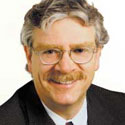
10 October 2011 | Chicago
Tall Tales: Interrogating the typology of the Tall Building
The ongoing and ubiquitous project of modernism has acclimated humanity to the universality of the tall building as a type. Transformations and mutations of the...

23 October 2009 | Chicago
Chicago: 125 Years of Tall – Reflections
In the city where tall buildings began, this presentation highlights the historical trends, drivers and challenges behind tall buildings and sustainable urban development; what city...

23 October 2009 | Chicago
Interview: Retrofit of the Willis Tower
Adrian Smith & Gordon Gill of AS + GG Architecture are interviewed by Jeff Herzer during the 2009 CTBUH Chicago Conference at Illinois Institute of...
28 October 2019
Bringing an Icon into the Future: Willis Tower
Few buildings are as iconic as Willis Tower. Generations of Chicagoans have a collective memory of this building playing a role in their entire lives....
 Buildings.jpg)
28 October 2019
World’s Biggest (Tall) Buildings
In both professional circles and in the public eye, the subject of the World’s Tallest Building (WTB) has held the spotlight for more than a...
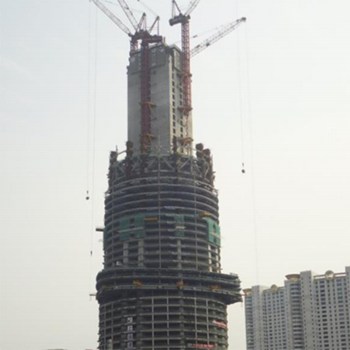
01 September 2018
Developments of Structural Systems Toward Mile-High Towers
Tall buildings which began from about 40 m tall office towers in the late 19th century have evolved into mixed-use megatall towers over 800 m....
Ermell_ccbysa.jpg)
19 January 2016
Year in Review: Tall Trends of 2015
CTBUH has determined that 106 buildings of 200 meters’ height or greater were completed around the world in 2015 – setting a new record for...

24 August 2015
World’s Highest Observation Decks
Perhaps no element of a tall building is more closely related to the pure pleasure of standing high in the sky and taking in the...
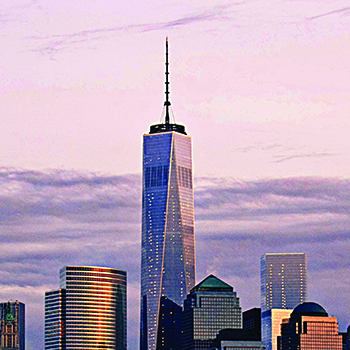
28 January 2014
Debating Tall: Antennas vs. Spires
The CTBUH’s Height Committee ratified the architectural height of One World Trade Center last November, touching off massive media coverage and opening up complicated mixed...

01 August 2013
Imagining the Tall Building of the Future
Predicting the future is an impossible task. One will never get it absolutely right. However, that does not make it a pointless exercise. Instead, such...
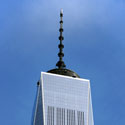
27 January 2012
Debating Tall: A Supertall Future in the US?
In 1990, only 11 buildings in the world could be counted as a “supertall” (defined as a building over 300 meters tall), and all but...

13 April 2011
Tall and Urban: An Analysis of Global Population and Tall Buildings
Tall buildings are spreading across the globe at an ever-increasing rate. This study demonstrates the relationship between population and tall buildings across those countries and...

12 June 2008
The Tallest Buildings in the World: Past, Present & Future
Over time, the average height of the 100 tallest buildings in the world has been steadily increasing. However, by 2010, this average height will have...
23 January 2020
Join the CTBUH Chicago Future Leaders Committee for a tour of Gensler's downtown Chicago office space! The afternoon event will feature a short presentation on Gensler's current work.
28 August 2019
CTBUH Chicago led an illuminating tour of the wholesale renovation of the base of Willis Tower, the largest such construction project to take place since the building’s completion
28 August 2019
CTBUH Chicago led an illuminating tour of the wholesale renovation of the base of Willis Tower, the largest such construction project to take place since the building’s completion
11 July 2019
This special reception will give VIPs the opportunity to let loose in the fantastic setting of Willis Tower (formerly Sears Tower), Chicago’s current tallest building (442 meters).
2 May 2019
CTBUH Moment in History #4 discusses the controversial claim by the Petronas Towers for the title of “World’s Tallest Building” over the record holder at the time, Willis Tower.
28 March 2019
"CTBUH 50th Anniversary: Moments in History #3" explores the impact that CTBUH Chairman Fazlur R. Khan, partner, Skidmore Owings & Merrill, had on the tall building industry.
29 November 2018
The latest event in the Building Tall Lecture Series, hosted by the Chicago Architecture Center and CTBUH, featured a panel on revitalizing iconic skyscrapers.
1 February 2018
The Chicago Architecture Foundation (CAF) and CTBUH hosted a panel discussion on the movement to incorporate green features into tall buildings.
7 December 2017
The founder of the CTBUH, Dr. Lynn Beedle, a professor and eventually director of the Fritz Engineering Laboratory at Lehigh University, would have been 100 years old on December 7.
Subscribe below to receive periodic updates from CTBUH on the latest Tall Building and Urban news and CTBUH initiatives, including our monthly newsletter. Fields with a red asterisk (*) next to them are required.
View our privacy policy